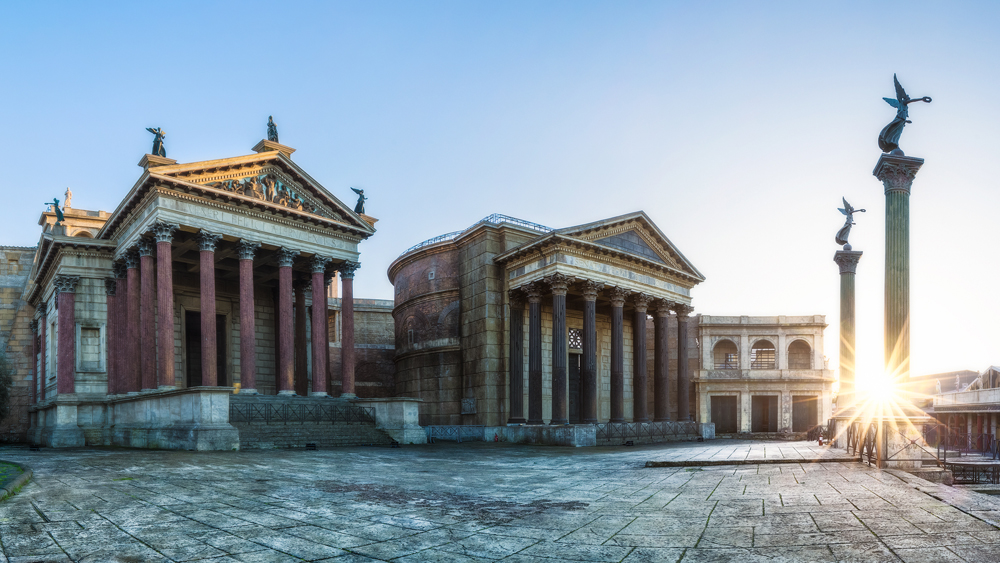Rome’s Cinecittà Studios are filling up once again following a brief hiatus due to the fallout from Hollywood’s writers’ and actors’ strikes combined with a – now fully resolved – spell of uncertainty about the solidity of Italy’s tax rebate for international productions.
That’s the main takeaway from a press event held in Rome by Cinecittà CEO Manuela Cacciamani who, after taking the reins in July, is now implementing a 2025-2029 plan under which she expects the studios to generate nearly €60 million ($67 million) in revenue and turn a small but significant €4.3 million ($4.8 million) profit by 2029.
The iconic film facilities that are being revamped thanks to a €300 million ($338 million) loan, provided by the European Union’s post-pandemic recovery fund, recently lured both Mel Gibson, who is arriving in August to shoot “The Resurrection of the Christ” at Cinecittà’s sprawling new Studio 22 facility, and Ridley Scott. The latter has set up camp at Cinecittà’s Studio 5, once known as Federico Fellini’s second home, for his post-apocalyptic thriller “The Dog Stars,” while Disney, Universal and Fox Nation will soon start shooting major still undisclosed projects on the studio lot, Cacciamani said.
She noted that the studios have now reached full occupancy for the fourth quarter of this year.
The Cinecittà chief underlined that, while getting U.S. and, more broadly, international clients to shoot at the studios is crucial, she is also focussing on attracting more Italian productions. “What I have learned from recent years of actor and screenwriter strikes, as well as fires and tariffs, is that you can’t just rely on international cinema,” Cacciamani said, adding that attracting more Italian movies is one of her priorities.
The main driver for luring international shoots is a combination of the country’s tax incentives and the fact that Cinecittà is being transformed into a large state-of-the-art digital age complex.
Under the revamp, the number of soundstages at Cinecittà is being expanded from from 19 to 24. They include the new Studio 22, which is more than 38,000 square feet and the Studio 18, home to what is being touted as Europe’s largest and most modern LED wall where shooting recently wrapped on U.S. sci-fi thriller “White Mars,” headlined by Luke Newton (“Bridgerton”) and Lucy Hale (“Pretty Little Liars”) that was filmed entirely using the virtual stage.
As for the Italian rebates, Nicola Borrelli, head of the film department of Italy’s culture ministry, during a recent confab in Cannes, hosted by Variety provided assurances that the incentives for international productions are fully active, following a brief period of uncertainty due to the fact that the government was mulling some modifications. Borrelli also provided a detailed rundown of the country’s 40% rebate for international film and TV productions. “In Italy there is a €20 million euros ($22 million) per year cap per company,” he said. But, Borrelli added, “there is no cap per project.” So there have been lots of international shoots with much higher budgets that have been able to tap into the rebate through different companies, he said.
During her Rome presentation, Cacciamani also underlined the well-known quality of Cinecittà’s artists and craftsmen, who were recently instrumental to building the Vatican set for Oscar-winner “Conclave,” as another major selling point.
“We are not just building new studios,” Cacciamani said. “We are redefining what it means to make movies in Europe,” she added. “Cinecittà is becoming a machine that fires on all cylinders every day with a top notch standard of excellence,” the Rome studio chief went on, noting that “the level of services and the quality of our crews and craftsmen are what sets us apart from the competition.”
Read the full article here








